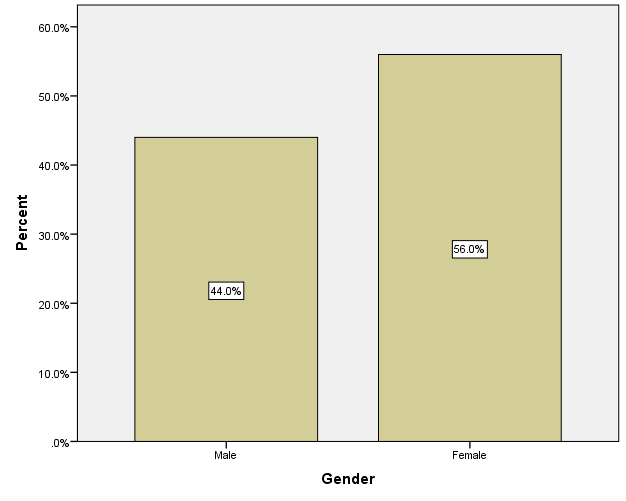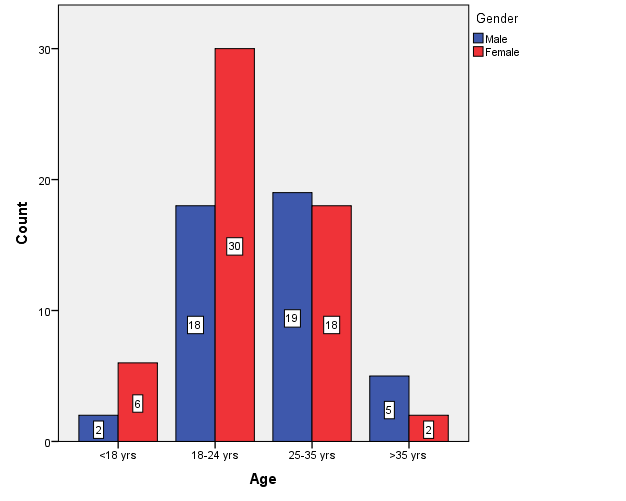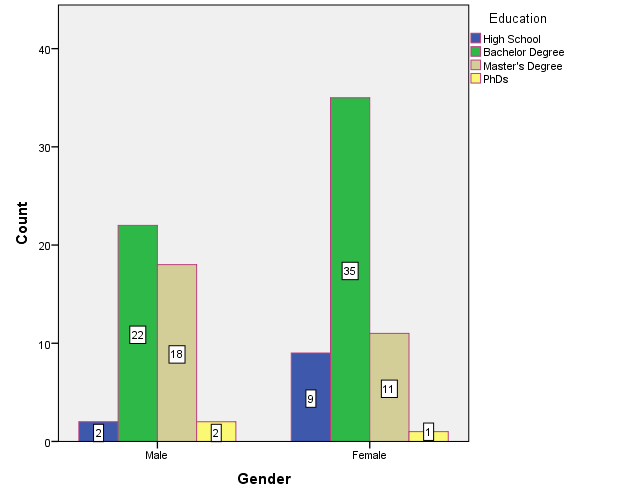Abstract
Volunteering can be defined as an activity where an individual dedicates his personal free time, his energy, knowledge and skills to the benefit of other people, groups or causes. Nowadays, volunteers have become an important human resource in many sectors, especially in sports. Under these circumstances, assessing the factors that contribute to sport volunteer satisfaction is an approach that provides valuable information about the sport volunteering motivation. The purpose of this research is to identify and examine the characteristics of volunteer motivation and the factors responsible for the volunteer satisfaction by using the Bang and Challadurai’s volunteer motivation scale and the Kuhn and Guzley’s volunteer satisfaction index. To achieve the purpose of this research, some questionnaires were distributed among sport volunteers. The questionnaire was focused on measuring the perception of sport volunteering motivation and how volunteers understood their experience according to their level of satisfaction. From various key subjects, some motivation factors were taken into consideration, like personal growth, interpersonal contact, career orientation, community involvement and love of sport, to have an effect on the motivation of sport volunteers. According to the outcomes, volunteer satisfaction factors have a significant effect on sport volunteering satisfaction. For all people involved in sport management, this research provides evidence on the perception of satisfaction for volunteers in sport volunteer programs.
Keywords: Sport volunteeringmotivationsatisfactionsport management
Introduction
Volunteering has been defined as an activity where an individual dedicates his/her personal free time, energy, knowledge and skills to the benefit of other people, groups or causes (Omoto, Snyder, & Martino, 2000, p. 181). The research of Chelladurai (2006) asserts that volunteering is a unique type of social behaviour that typically takes place in an organizational context. Furthermore, apart from previous studies, Freeman (1997) has defined volunteering activity as a type of work that is done without any financial return. However, in contrast to Freeman’s definition of the volunteer, many other authors have mentioned different reasons why people volunteer, such as financial gains, commitment to organizations or countries, rewards, interpersonal relations, career orientation, social reasons (Clary & Snyder, 1999; Cuskelly & Boag, 2001; Finkelstein, 2007; Bang & Ross, 2009; Pauline, 2011; Bang, Ross, & Reio, 2012).
Motivation and satisfaction
In sport management and administration, field specialists have drawn attention to the employee’s satisfaction and motivation throughout the years (Cole, 1992; Hannagan, 1995; Chelladurai, 1999; Costa, Chalip, Green, & Simes, 2006). Particularly in the sport management field, researchers have examined volunteer’s motives and satisfaction around the globe in the light of the fact that the vast majority of world sport organizations and events are run by volunteers (Bang et al., 2012; Bag & Ross, 2009; Cuskelly & Boag, 2001; Clary & Snyder, 1999; Pauline, 2011; Finkelstein, 2007).
Management field authors have clarified that motivation is somehow a work-related psychological activity that essentially focuses on the quality and heading of the employee’s work-related conduct, since they use their vitality to accomplish distinctive aims or are less enthusiastic, which makes it very difficult for the managers (Hannagan, 1995). Furthermore, according to Cole (1992), motivation is concerned with why individuals do things and also which is the need or driving force inside a person.
Then again, motivation has an immediate association with the employee satisfaction. Bang, Ross and Reio (2012) conducted a research on a non-profit sport association, where they contemplated the volunteer’s activity fulfilment, motivation and affective commitment. The outcome shows that motivation has an immediate connection with job satisfaction, and job satisfaction involves a close relationship between values and affective commitments. Aside from this study, other scientists in the administration field studied the importance of job satisfaction. In any case, all definitions demonstrate that there is a connection between satisfaction and motivation. Rice, McFarlin and Bennett (1989) characterised satisfaction as a mental examination process which compared current job experience against some personal standards (wanting, feelings, seeking of other past experiences etc.). Consequently, Balzer et al. (1990) defined satisfaction as the feeling of an employee about his or her activity or job experience in connection with a past experience, present expectation or any available options.
Problem Statement
Volunteer retention is a major problem in sport sector. Costa et al. (2006) demonstrated that the number of volunteers contributing their leisure time towards this sector has diminished by 22% in Australia. The research of Taylor, Doherty and McGraw (2008) states that volunteer enrolment is an important issue within sports associations around the globe. Thus, volunteer recruitment and retention are a considerable problem in many countries (Wicker & Breuer, 2011). Weerakoon (2016) has pointed that information on sports clubs in Scotland shows that 68% of sports clubs are unable to attract new junior individuals, 55% of them failed to attract senior individuals, 41% of them failed to attract female members and also 34% of sport clubs have a serious problem with the recruitment of new people to their clubs in Switzerland.
Besides, it is known that the number of volunteers joining sports associations has dropped by 15% in the United Kingdom between 2002 and 2009, and furthermore, Active People Survey demonstrates that the support of volunteers has diminished in tennis, golf, rugby, football, basketball, cricket and swimming (Nichols, Knight, Mirfin-Boukouris, Hogg, & Storr, 2016). In this respect, Costa et al. (2006) reported that numerous specialists in human resource management identified many contributing factors for workers to remain or quit the company, and one major factor of employees’ retention is satisfaction (Weerakoon, 2016).
Research Questions
To achieve the purpose of this research, we formulated four questions:
What factors influence volunteer satisfaction?
What relationship exists between volunteer motivation scale and volunteer satisfaction index?
Does volunteer satisfaction dimensions influence overall sport volunteer satisfaction?
Which of the volunteer motivation factors heavily influence volunteer satisfaction?
Purpose of the Study
The aim of the current research is to determine the characteristics of volunteer motivation and the factors responsible for the volunteer satisfaction by using the Bang and Challadurai’s volunteer motivation scale and the Kuhn and Guzley’s volunteer satisfaction index. To reach this aim, questionnaires were distributed to sport volunteers chosen randomly through the online survey. The questionnaire was focused on measuring the perception of sport volunteering motivation and how volunteers understood their experience according to their level of satisfaction.
Research Methods
For this study, we used different research methods to achieve the purpose.
Literature review
Literature from all over the world has been consulted to help us understand theories on motivation and satisfaction and what is known about the concepts regarding volunteering. Among them, three main theories on motivation and satisfaction were analysed, namely the Function Theory, Self-Determination Theory and Maslow’s Hierarchy of Needs Theory.
Sampling
We considered sampling to be an important chapter of our research, because we tried to select a suitable amount of respondents representing the characteristic of the population. We chose 100 sport volunteers from sport-related events using the random sampling method.
Data collection
Since this research is empirical in nature, we first collected primary information. For this reason, a point-by-point poll was passed by the selected people. The survey strategy has been chosen as a real method for gathering information, because it is efficient, time-saving and this technique is highly relevant and applicable to empirical scientific studies.
The online survey method was applied for gathering information from people, and the Google Form was used to assemble the questionnaire.
Administering the questionnaire
The questionnaire was created to gather information from sport volunteers about their awareness of motivation, satisfaction and organization. We examined the characteristics of volunteer motivation and the factors liable for the volunteer satisfaction by using the Bang and Challadurai’s volunteer motivation scale and the Kuhn and Guzley’s volunteer satisfaction index. The questionnaire consists of four major chapters including the demographic one, motivation, satisfaction and overall satisfaction. The demographic chapter focuses on three items: gender, age and level of education. For motivation, the questionnaire has 20 items divided into five major components: interpersonal contact, career orientation, personal growth, community involvement and love of sport. The satisfaction part has 18 questions divided into three main components: group integration, empowerment and organization. The final part of the questionnaire is related to overall satisfaction and has 2 questions.
Statistical analysis
IBM SPSS Statistics 20 was used as a tool to analyse the data. When analysing the information gathered through the questionnaire, we used statistical tools such as sum, mean, standard deviation and correlation. The correlation was used to check the relation between independent and dependent variables.
Findings
The 40 items of the questionnaire were prepared using the Likert Scale. Thus, the first part of the questionnaire ranged from Strongly Disagree, Disagree, Neutral, Agree, Strongly Agree, and its second part ranged from Very Dissatisfied, Dissatisfied, Neutral, Satisfied and Very Satisfied.
Sample analysis
Figure



Perception of the impact of motivational and satisfaction dimensions in sport volunteering
The set of questions analysed the sport volunteers’ perception of the impact of motivational dimensions when volunteering in sport events. The key factors were split into five categories: interpersonal contacts, career orientation, personal growth, community involvement and love of sport. The descriptive Table
It is important to mention that the sport volunteers said that all the factors above influenced their volunteerism in sport, with a score of more than 3 points. Among these motivational factors, Career Orientation (4.25), Love of Sport (4.11) and Interpersonal Contact (4.09) are the most influential, encouraging sport volunteerism among the sample population.
The set of questions used to analyse the sport volunteers’ perception of satisfaction dimensions consisted in 20 questions divided into three main sections: organization support, empowerment and group integration. The descriptive results (Table
The correlation between motivation and satisfaction dimensions
To better understand the first and third research questions, two hypotheses were constructed. The first hypothesis (H1) was: there is a correlation between the dimensions of volunteer satisfaction and the volunteer motivation scale (factors). A two-tailed Pearson correlation test has been performed to verify if the hypothesis is valid or not. As the results in Table
To test the second hypothesis (H2) stating that volunteer motivation and satisfaction factors have a relation with overall satisfaction of volunteers, we have performed a two-tailed Pearson test. The correlation between motivation scale and overall satisfaction factor, as well as satisfaction dimensions with overall satisfaction, can be seen in Table
Conclusion
This research aimed to investigate the characteristics of volunteer motivation and the factors contributing to volunteer satisfaction. From different key dimensions, several motivation factors were established, such as interpersonal contact, career orientation, personal growth, community involvement and love of sport, to influence the motivation for sport volunteering people. As for the satisfaction dimensions, the study has revealed that group integration, empowerment and organization support also have an impact on volunteer satisfaction.
The same type of research done in many countries like the United States of America, the United Kingdom, Australia, Japan and China, resulted in a positive correlation between motivation, satisfaction dimensions and overall satisfaction. Our research results prove that there are correlations between motivation factors and satisfaction dimensions in sport volunteering. The research has shown that we are still learning what means to be a volunteer, what truly are the volunteer’s expectations. Our sport volunteers mostly act from the need of an improved resume that will help them in their future jobs; the subjects volunteer in sport just because they love one sport discipline in particular or to improve their personal abilities, gain knowledge or gain practical experience.
References
- Balzer, W. K., Smith, P. C., Kravitz, D. A., Lovell, S. E., Paul, K. B., Reilly, B. A., & Reilly, C. E. (1990). User’s manual for the Job Descriptive Index (JDI) and the Job in General (JIG) Scales. Bowling Green, OH: Bowling Green State University.
- Bang, H., & Ross, S.D. (2009). Volunteer motivation and satisfaction. Journal of Venue and Event Management, 1(1), 61-77.
- Bang, H., Ross, S., & Reio, T. G. Jr. (2012). From motivation to organizational commitment of volunteers in non-profit sport organizations: The role of job satisfaction. Journal of Management Development, 32(1), 96-112.
- Chelladurai, P. (2006). Human resource management in sport and recreation (2nd ed.). Champaign: Human Kinetics.
- Chelladurai, P. (1999). Management of human resources in sport and recreation. Champaign, IL: Human Kinetics.
- Clary, E. G. & Snyder, M. (1999). The motivations to volunteer theoretical and practical considerations. Current Directions in Psychological Science, 8(5), 156-159.
- Cole, G. A. (1992). Management theory and practice (4th ed.). Wynberg: Cengage Learning EMEA.
- Costa, C. A., Chalip, L., Green, B. C., & Simes, C. (2006). Reconsidering the role of training in event volunteer’s satisfaction. Sport Management Review, 9(2), 165-182.
- Cuskelly, G., & Boag, A. (2001). Organizational commitment as a predictor of committee member turnover among volunteer sport administrators: Results of a time-lagged study. Sport Management Review, 4(1), 65-86.
- Finkelstein, M. A. (2007). Correlates of satisfaction in older volunteers: A motivational perspective. The International Journal of Volunteer Administration, 24(5), 6-12.
- Freeman, R. (1997). Working for nothing: The supply of volunteer labour. Journal of Labour Economics, 15(1), 140-166.
- Hannagan, T. (1995). The challenge of management. Management, concepts & practices. London: Pitman.
- Nichols, G., Knight, C., Mirfin-Boukouris, H., Hogg, E., & Storr, R. (2016). Motivation of sport volunteer in England: A review for Sport England. Retrieved from https://www.sportengland.org/media/10205/motivations-of-sport-volunteers.pdf
- Omoto, A., Snyder, M. & Martino, S. (2000). Volunteerism and the life course: Investigating age-related agendas for action. Basic and Applied Social Psychology, 22(3), 181-197.
- Pauline, G. (2011). Volunteer satisfaction and intent to remain: An analysis of contributing factors among professional golf event volunteers. College Research Center, 26. Retrieved fromhttps://surface.syr.edu/researchcenter/26
- Rice, R. W., McFarlin, D. B., & Bennet, D. E. (1989). Standards of comparison and job satisfaction. Journal of Applied Psychology, 74(4), 591-598.
- Taylor, T., Doherty, A. & McGraw, P. (2008). Managing people in sport organizations: A strategic human resource management perspective. New York: Routledge.
- Weerakoon, R. K. (2016). Human resource management in sports: A critical review of its importance and pertaining issues. Physical Culture and Sport. Studies and Research, 69(1), 15-21.
- Wicker, P., & Breuer, C. (2011). Scarcity of resources in German non-profit sport clubs. Sport Management Review, 14(2), 188-201.
Copyright information

This work is licensed under a Creative Commons Attribution-NonCommercial-NoDerivatives 4.0 International License.
About this article
Publication Date
16 February 2019
Article Doi
eBook ISBN
978-1-80296-054-9
Publisher
Future Academy
Volume
55
Print ISBN (optional)
-
Edition Number
1st Edition
Pages
1-752
Subjects
Sports, sport science, physical education
Cite this article as:
Maftei, Ş., Raţă, G., & Breană, B. (2019). Study On The Importance Of Creating A Badminton Teaching Method. In V. Grigore, M. Stănescu, M. Stoicescu, & L. Popescu (Eds.), Education and Sports Science in the 21st Century, vol 55. European Proceedings of Social and Behavioural Sciences (pp. 576-585). Future Academy. https://doi.org/10.15405/epsbs.2019.02.72
